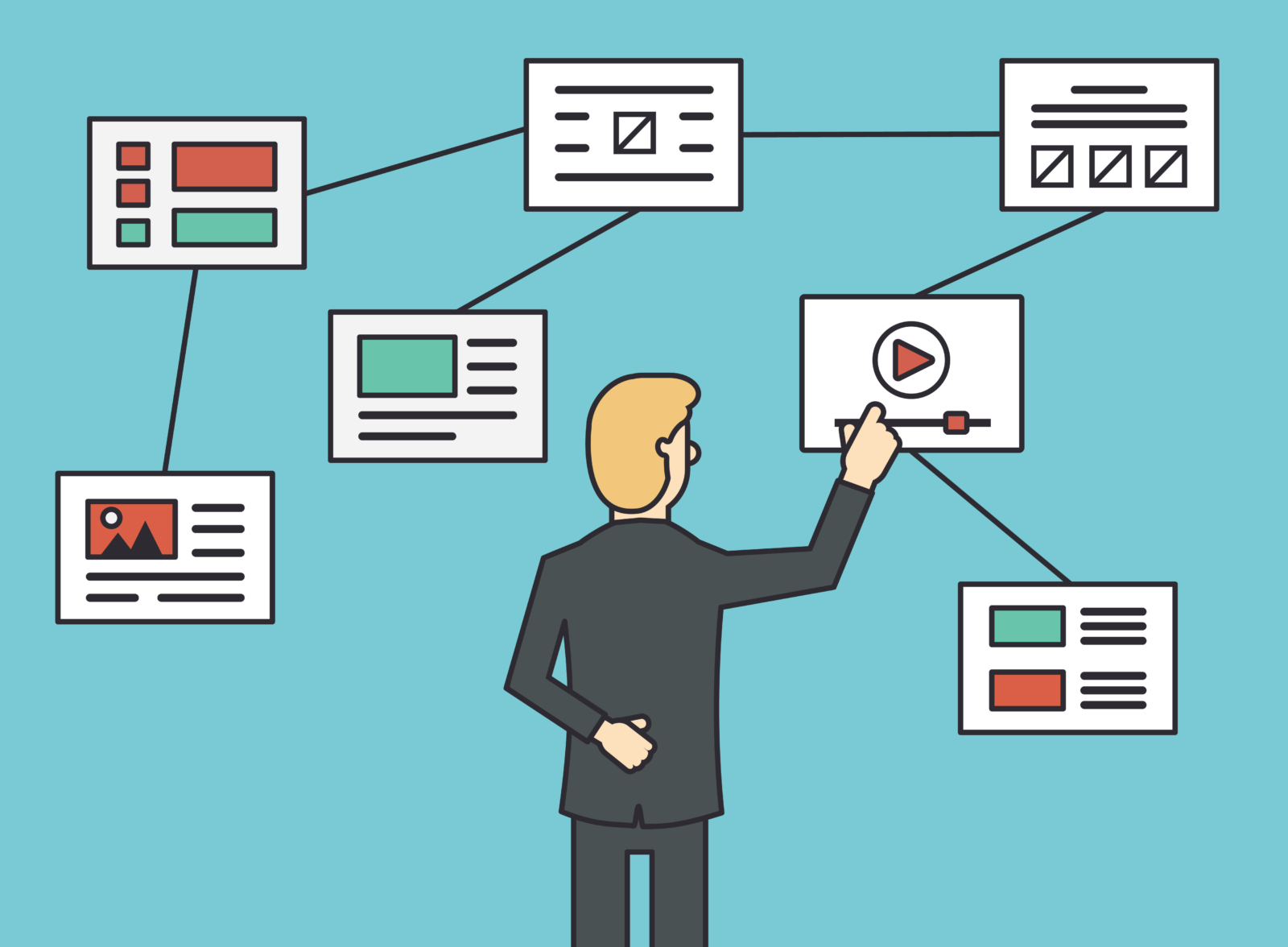Every marketing leader understands the frustrating moment when every aspect of a campaign
seems to be set up for success, but the conversions still aren’t coming through. Even the savviest PPC and affiliate marketing campaigns can face eCommerce sites and B2B landing pages that are poorly optimized to capitalize on newfound traffic.
Is your campaign failing to convert? Here are 15 conversion killers you can fix immediately on your eCommerce or B2B site:
Slow-Loading Image Carousels
Image carousels, also known as sliders, have a negative effect on both eCommerce sites and landing pages alike. Image carousels slow down page load times dramatically and can side-track visitors from the very reason you’ve invested time and budget to lure them in the first place.
When it comes to landing pages, static images are best and remain a staple of the KISS-method for site optimization.
Intrusive Pop-Ups
The evil cousin of image carousels, pop-ups are even more distracting and certainly more intrusive. User tests have shown that 50 percent of site visitors will leave with each additional click required to make a purchase or convert.
No marketing leader in their right mind would want to waste a click on a popup.
The one exception to this rule? Content-rich pages, like blog articles and infographics, often see a significant improvement in conversions when a pop-up with a compelling offer is implemented.
Just remember to keep them away from the home page and checkout page. (ESPECIALLY the checkout page!)
Burying Your Bestsellers
It’s hard to understand the rationale of designers and site managers that opt to place their best-selling products and content below the fold. The same goes for B2B sites – what good is a lead form if it’s not accompanied by the most compelling reasons for someone to submit their contact information?
If the brand’s sales funnel relies on a tripwire purchase, the benefits of that tripwire should be trumpeted from the headline and hero image of the page right down to the footer. (And yes, the lead form still needs to be above the fold, too.)
Pro tip: Increase your B2B site’s conversion rates by adding a second lead form, identical to the first, towards the footer.
Inefficient Site Search
It’s critical for eCommerce sites to have a great search functionality built in. Platforms like Magento and Big Commerce include strong out-of-the-box options, but many sites opt for an even stronger search extension.
Any eCommerce search functionality should include filters and a live search function for a simplified customer experience.
No SSL Certificate
This one’s pretty self-explanatory, but it’s incredible how many eCommerce and B2B sites alike forget to renew their SSL certificates.
Think of it this way – would you rather buy a high-end watch from a jewelry store, or from a guy selling jewelry from the trunk of his car?
Don’t be the guy selling watches out of the trunk of your car – renew your SSL certificate.
Too Many Form Fields
By now, most marketers know that more form fields lead to lower conversion rates, but how many is too many? The answer is that it depends on the offer. Marketing leaders must work with their sales teams to determine just how much initial information is necessary for their success.
For example, could a B2B landing page get away with not asking for a phone number, as long as a name, work email, and company name are provided? It shouldn’t take the second-coming of Sherlock Holmes for a sales rep to use Google to fill in the blanks.
This goes for coupon codes on eCommerce sites, as well. Marketing leaders must make it easy for online shoppers to redeem special offers. Those that do will be rewarded with higher conversion rates.
Slow Load Times
Ever sit back and reminisce about the “good old days” where you had time to cook a pizza and watch an episode of Seinfeld while waiting for a website to load? Neither do your customers.
A site that takes three seconds to load will be deemed slow by online shoppers; four seconds and you’re dead to them (hello, high bounce rates!).
A good goal to shoot for is a two second or less load time. Start by compressing images and investing in a strong hosting configuration. Even if your site doesn’t quite get there, coming in closer to two seconds than four can make all the difference in your site’s conversion rates.
Multiple Calls to Action
Time and time again, tests have shown that increasing options to find the right fit for everyone leads to too many choices for anyone to make a quick decision. Marketing leaders looking to optimize their site’ conversion rates should choose one call to action per landing page, and stick with it.
Those that have their marketing hearts set on testing multiple calls to action should leverage multiple landing pages to do so. Remember, when in doubt,
Keep It Simple, Stupid.
Shopping Cart Confusion
The second quickest way to kill an eCommerce sale is to confuse customers during the checkout process. (Want to know the quickest? Keep reading!) Naming your shopping cart anything but “shopping cart” is sure to contribute to that confusion.
Other easy ways to confuse the customer and lose a sale include a complex navigation process and making it more difficult to add products to the cart than flying a plane.

Required User Accounts
Believe it or not, not every online shopper wakes up wondering what’s missing in their life, only to realize that it’s a customer account on your brand’s eCommerce site.
Marketing leaders are best-served to prioritize conversion rate optimization over new customer accounts online. If the customer has a great experience that leads to a purchase you’ll get their information, anyway.
A Harsh Mobile Experience
Marketing leaders are well-versed in the needs of a mobile-friendly site, but merely using a mobile-responsive site template is not enough. All of us have visited a site that required enough scrolling to give our thumbs blisters.
Do you remember ever converting on one of those endlessly-scrolling sites? We don’t either.
High Shipping Costs
Lo and behold, the fastest way to lose a customer! In the era of Amazon, online shoppers expect their orders fast and free.
Most consumers are willing to give eCommerce brands some wiggle room when it comes to shipping costs, but still expect their orders to arrive in a timely manner (two to three days) without an exorbitant fee attached.
Otherwise, they’ll simply head over to Amazon and buy a similar product with their Prime account. Maximize your conversion rates and minimize your headaches by keeping shipping fees as low as possible – they can’t be depended on as a profit center in 2017.
Brand Mistrust
Marketing leaders need to go the extra mile to build trust with potential customers; SSL certificates are just the start.
It’s time to ditch conversion rate killers like fake/anonymous/employee testimonials. Customers can smell them a mile away and they do more to discredit a brand than anything else.
Instead, try to find two or three great, detailed testimonials or focus on compelling (and factual) case studies to help tell your brand’s story. Social proof is essential in the game of conversion rate optimization.
Poor Copy
Sometimes marketing leaders get so focused on the design and layout of their eCommerce sites that they forget to give the copy several thorough reviews. Boring copy will kill conversion rates.
We highly recommend using an agency or creative freelancer to write brand copy. It’s truly difficult to see the proverbial forest for the trees when it comes to in-house copywriting.
To truly maximize your conversion rate, you should always be testing – and that goes for your site’s copy as well as the design.
A Confused User Experience
There’s a reason that UX pros are highly sought-after these days. Users want a clean, simple experience that allows them to find what they’re looking for, get it, and get off your site quickly and easily no matter what device they’re using.
Marketing leaders must recognize the primary intent of their site visitors and constantly work to improve the user experience (and their conversion rates) by simplifying the steps needed to complete that conversion.
Are any of these conversion rate killers hanging around on your sites?
Contact Fidelitas for a site audit to see where you can improve your conversion rates!

